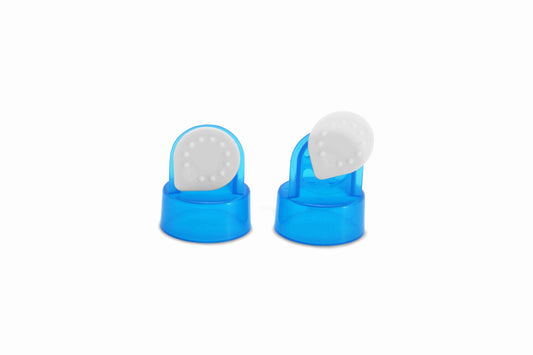Breastfeeding and work: smoothing the transition
Whether your maternity leave has been 6 weeks or a year, you are probably concerned about how the actual return to work will go. Will you seamlessly fit back into the life of a working woman, or will there be some wrinkles that need to be ironed out before you feel comfortable as a working mother? Here are some tips to help you smooth the transition back to work.
Consider flexible work options that will be more breastfeeding / baby-friendly
While you may be used to a particular work schedule, is it possible to do the same job in other ways? With email, texting and Internet connections, it's much easier to arrange telecommuting, at least part of the time. Working from home with a baby to care for has its own set of complications, but it may be easier, even just temporarily. Can you go back part-time? For some families, this isn't financially possible. But for others, shorter workdays still contribute to income but allow more flexibility to be with their babies. Some workers arrange job sharing - two employees do the same job, but share the hours. Could you possibly bring baby to work with you? You certainly cannot do this in a very physical job, but with certain job types, you may be able to bring your baby to the office with you. You could bring a portable crib, or wear baby in a carrier, to keep him near you all day. This is usually best for young babies, and tends to be more difficult once your baby is 4-6 months old.
Work with your partner to come up with a baby plan
Your return to work will be easier if you and your partner are on the same page about household responsibilities. Just as you may have worked on a birth plan for your labor and delivery, work together on a baby plan for the everyday jobs of parenting. Discuss with your partner who will shop for food, who will cook and who will do the cleaning. You may even want to make a list of home responsibilities such as cooking, laundry, housekeeping, shopping and errands so you can sort out who can do what and when. Include childcare in this list - diapering, bathing, etc. - and keep in mind you'll still do much of the feeding since you're a nursing mom.
Get comfortable with your breast pump before the first day back.
Don't wait until the first day back to pump. If you are returning to work full-time, a
double electric pump is best. Learn how to assemble your pump, and make pumping at least once a day part of your maternity leave routine. You'll get to know which settings work best for you, and you will have the opportunity to
stockpile milk in the freezer to take some of the pressure off to produce enough on your first few days back. Try to wait until breastfeeding is well-established to
introduce a bottle. But if your maternity leave is short, you may need to start with one bottle a day very early in your baby's life. You'll also want to have an idea of how often your baby is eating, because this is how often you will want to pump when you're apart. This will also give you an idea of how much milk you will need to leave for your baby.
Confirm arrangements with your employer.
While breastfeeding and working are supported by the law, make sure you've already discussed pumping with your employer, and have a plan in place. Decide where you will pump, how often, and who will cover your work (if needed) while you are on a pumping break. You will need a private place (not a restroom) and will likely need access to an electrical outlet. Some employers will be hesitant at first, but once they see a productive employee easily fitting pumping into her workday, they will be your biggest supporter. Remember, your rights as a breastfeeding mum to express for your baby are protected by law. You can find out more about working and breastfeeding from the
Australian Breastfeeding Association.
Ease back into the workplace
Make arrangements with your employer to start back slowly. Consider returning to work mid-week so you only have a couple days away from your baby at first, and then the weekend to reconnect. Or perhaps you can work fewer hours the first week - for example, four rather than eight hours each day for the first week.
Do a dry-run
Before the first day back, practice. This gives you the chance to see where any glitches are in your routine and make the necessary changes. It also gives you the opportunity to work through your feelings of being separated from your baby briefly. Wake at the time you're planning to get up for you work, take a shower, get dressed, do your make up and hair, eat breakfast - whatever you are planning when you return to work. Arrange to take your baby to day care, or have your sitter come over if you have an in-home provider, and "work" a partial day. Drive the commute to work from the sitters so you can see what kind of traffic you'll face. Pump when the baby would typically be eating to see how you might need to adjust your schedule. Keep in mind that if your breasts become engorged, it's a signal for your body to make less milk. You'll want to express often to avoid this downward spiral in supply.
Do as much as possible the night before your first day back
Once your first workday is upon you, start getting ready the night before to help your morning run more smoothly. You might pack your lunch, ready the nappy bag, make sure your pump is ready to go, set out everyone's clothes, and even set out breakfast. Plan an easy evening meal for the first day back, and do any prep work ahead so you can cook a quick dinner more easily when you arrive home the next day.
Simplify the morning on your first day back
Try getting ready before your baby normally wakes, and consider taking your baby to the sitters in pyjamas. Plan to breastfeed when your baby first wakes, then one more time before you leave the sitters to go to work. Make sure you allow enough time to do this, and be sure to arrange it with your daycare provider ahead of time. While the return to work is often bittersweet, you can make it go more smoothly for everyone with some advance planning. Don't be surprised if you actually enjoy some time in the adult world, or if you experience grief about being away from your baby - both are normal. And think about adding a weekly "check-in" with your partner to see how the family is dealing with this new phase. You will likely need to refine certain parts of the routine, and keeping everyone in on the arrangement will help to resolve difficulties more easily as they arise. What made your life easier when you went back to work when breastfeeding?






